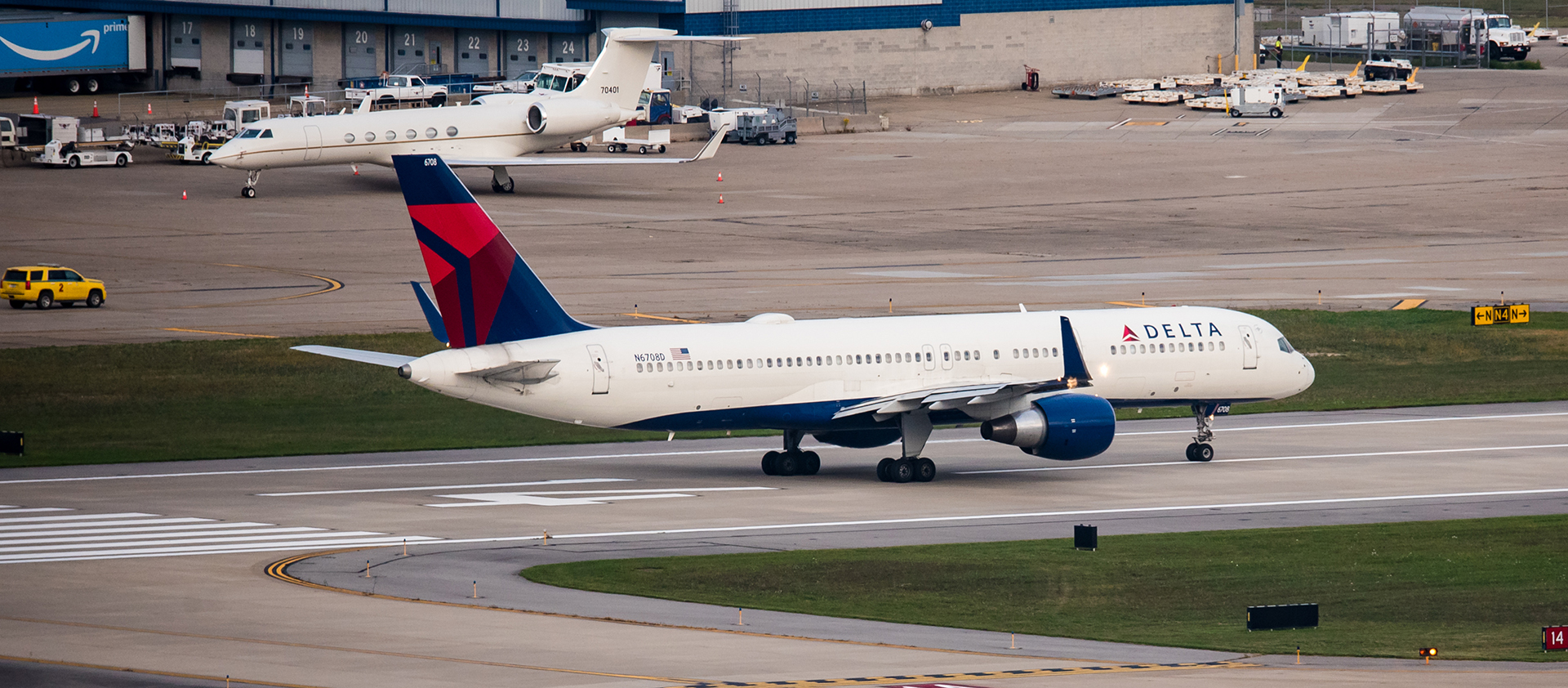What Do Runway Numbers Mean?
Airfield numerals key to helping passengers reach destinations
By gmastrangelo and Julie Bercik
Published January 12, 2024
Read Time: 4 mins
As your plane taxis down the runway, you may notice the white numbers at the end of the runway. Although seemingly random, those numbers are a critical part of helping your flight take off and land on the right runway.
The runway numbering system is quite precise. Each runway number helps pilots know the runway they should use.
“The runways are aligned magnetically with the earth’s magnetic field, and the runway designations are based on that,” said Jim Polachek, Operations Compliance Manager, at PIT.
Since each runway is aligned magnetically, in order to find a runway number, you round the compass heading of each runway to the nearest 10 degrees.
It’s standard with runway numbers to drop the last zero of each number. Since a compass starts at 10 degrees and rounds out at 360 degrees, runway numbers never go above 36. So, let’s say a runway is closest to 140 degrees on a compass. Drop the zero and you get runway No. 14.
You’ll also notice that some runway numbers have a letter after them, too. The letters differentiate two or more parallel runways that point in the same direction.
Runway numbers at PIT
Back on your plane at PIT, notice that three of the four runways here have similar numbers: 28R, 28C and 28L. Let’s break down what these numbers really mean.
Since each runway starts with the number 28, they’re aligned magnetically at about a 280-degree magnetic heading. The letters, R, C and L represent the right, center and left parallel runways. So, although each runway shares the same alignment, the letters differentiate the three.
Once you know the magnetic heading of one runway end, you can easily calculate the magnetic heading of the opposite runway end too. So, if you’re on the end of runway 10L at PIT, you’re facing a 100-degree magnetic heading. That means the opposite end of that runway is 280-degrees. That number is calculated by taking 100 degrees – the magnetic heading of runway 10L – and adding another 180 degrees. That’s how you end up at 28R!

A Southwest 737 MAX 8 accelerates down PIT’s Runway 10L/28R for departure on Jan. 3, 2024. The red sign indicates an entrance aircraft use to taxi onto the runway. (Photo by Beth Hollerich)
Fly like the wind
Most airlines arriving at PIT can land on any of the airport’s four runways, though Mother Nature can dictate the arrival and departure runways in use. Weather, specifically wind direction and speed, play a major factor in what direction aircraft take off and land. Aircraft should always take off and land into the wind. Visibility also dictates the type of approach that pilots use.
Aside from the runway numbers directing the crew in the sky, PIT has a precision approach path indicator, or PAPI, installed at the end of each runway that pilots can use in conjunction with other instruments to help them land. These visual aids provide vertical guidance to pilots as they approach the runway. From the ground, they may not look like much, but when pilots are on their final approach, they use this visual aid to keep the aircraft on the proper glidepath – one example of the many tools that can assist in landing a plane.
Each PAPI until consists of four identical light units, each projecting a split red/white beam of light into the approach path of the runway at a specific angle. Depending on the approach angle of the aircraft, the lights change color as viewed from the cockpit. Once the pilots see two red lights and two white lights, they know they’re on the right glidepath.

An Alaska Airlines 737-900ER takes off from PIT’s Runway 10C/28C on Sept. 27, 2023. Wind direction and speed, play a major factor in what direction aircraft take off and land. (Photo by Beth Hollerich)
Maintaining the nervous system
The lights and numbers on the airfield don’t take care of themselves. From making sure all of the airfield lighting systems are functioning correctly to keeping the airfield free of foreign object debris (FOD), the crew functions like a well-oiled machine or, as airport duty manager Trudi Shertzer, calls it a “nervous system.”
“If one part of the nervous system goes down, another part is going to be there to help pick up the slack or even help get that part back up and running,” Shertzer said. “But everyone needs to work in conjunction to make sure that the airfield keeps moving.”
And that nervous system never stops. Employees are on the airfield 24/7 to make sure everything is running smoothly. So, next time you take off from PIT, keep an eye out for one of our crew members. They might even be repainting the runway numbers.
Watch
This Next
Read
This Next






